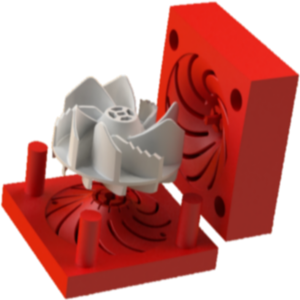
Anyone who has ever participated in arts and crafts, and used a hot glue gun already knows how 3D printing works.
Surprisingly a simple hot glue gun operates just like the extruder of a 3D printer.
A hot glue gun uses pressure (applied by the user) to push the solid glue stick through the heating element, making it “hot glue”. The user controls the dispensing of hot glue in the two dimensions of the X&Y planes (thus making it 2D)… the user could use it in the third dimension, but that is just wasteful and beyond the scope of the device.
Before we get in-depth with 3D printing, let’s have a refresher on the different types of axis:
- If you were solving for the volume of a cube, you would need 3 variables – correct? Any 4th grader could tell you that. The formula for a cube is simply Length(L) X Width(W) X Height(H) = Volume. Why do we need those three particular variables? Well, those three variables describe the X,Y and Z axis respectfully.
Now, as stated earlier, the extruder acts like the hot glue gun but instead of a human operator, the 3D printer uses a robot to control the X and Y axis – but what makes the 3D printer, 3D is the ability to operate in the third axis: the “Z-axis”.
Different manufacturers of 3D printers have different ways of controlling the Z-axis (in fact, the more expensive the printer, the better the printer can handle the Z-axis.)
3D printers are possible due to the laminar (able to be placed in layers) nature of cooled plastic – therefore, literally every 3D printed project is built from the ground up.
Building on that ground up mentality (pun intended greatly), 3D printing is considered in the manufacturing field as an “additive process” meaning only the material needed is utilized and is added in layers to form an end product. The only other process in manufacturing is considered a “subtractive process” meaning a large block of a certain material is etched away from (subtracted from) to form an end product – this process tends to be more expensive, limited in capabilities and borderline outdated.
Concluding Thoughts:
As stated earlier, every 3D printer manufacturer utilizes its own proprietary method of controlling the Z-axis, and the better the control of the Z-axis the better the finish, strength and durability of the final product. The fleet of printers at TRINOTA produces some of the best tolerances in the Z-axis (ENVISIONTEC ULTA 3SP), producing “injection mold” quality end products. Essentially: the way you made it in your CAD software is the way you will ultimately hold it in your hand.
Now that you’ve got a grasp on the 3D printing process, be sure to read: 3D Printing – How To Get Your Idea From Head To Hand.

